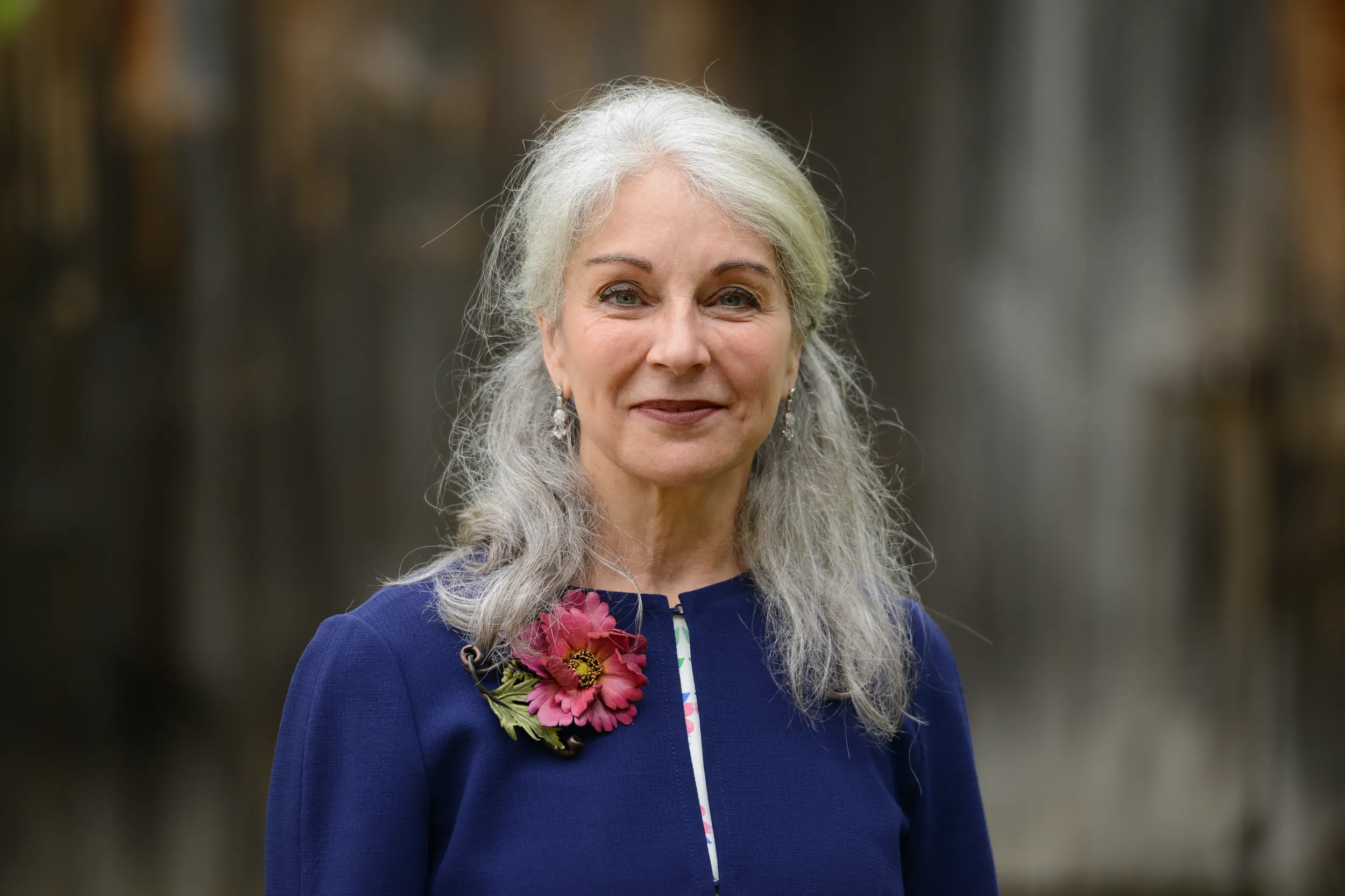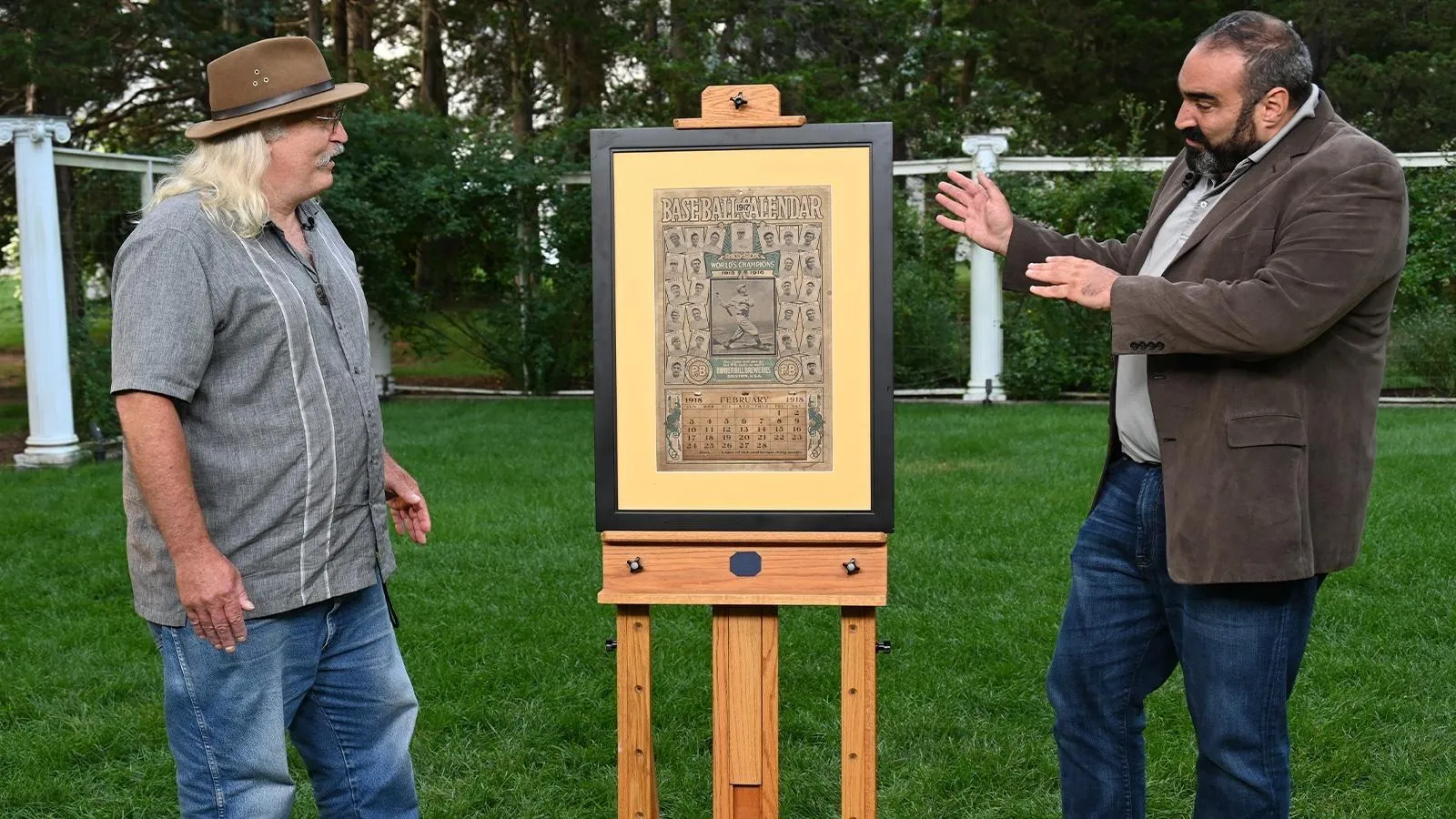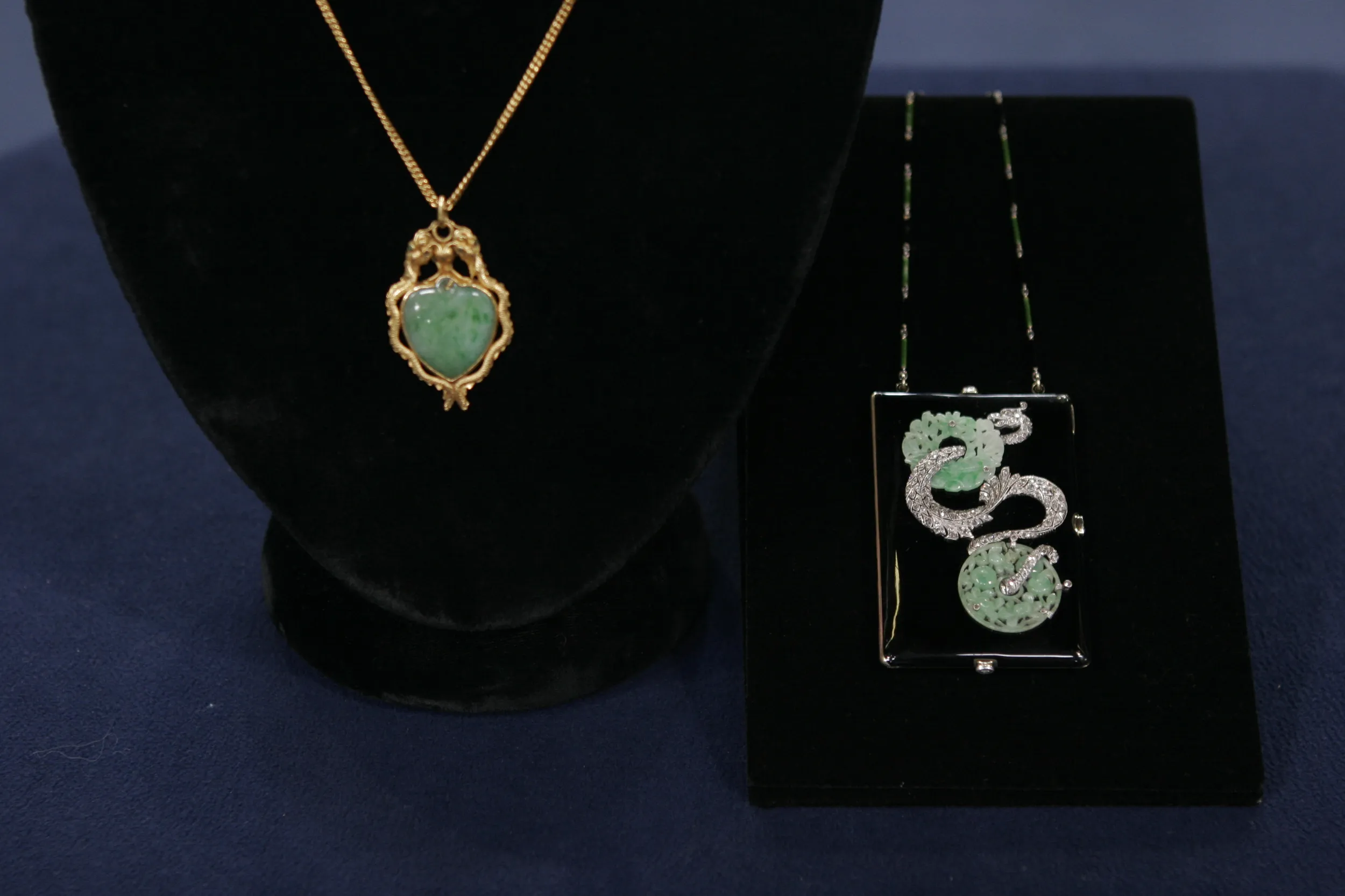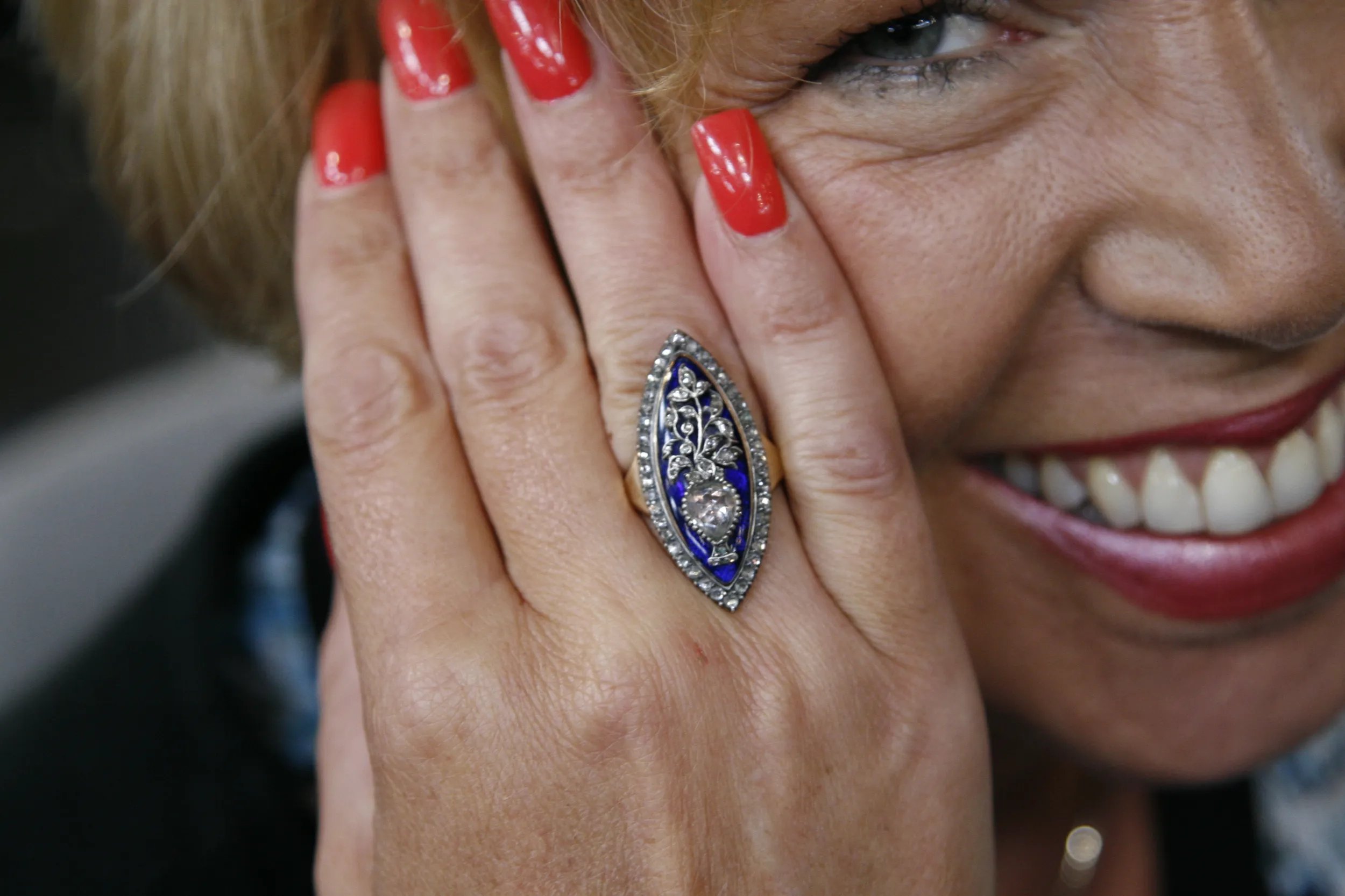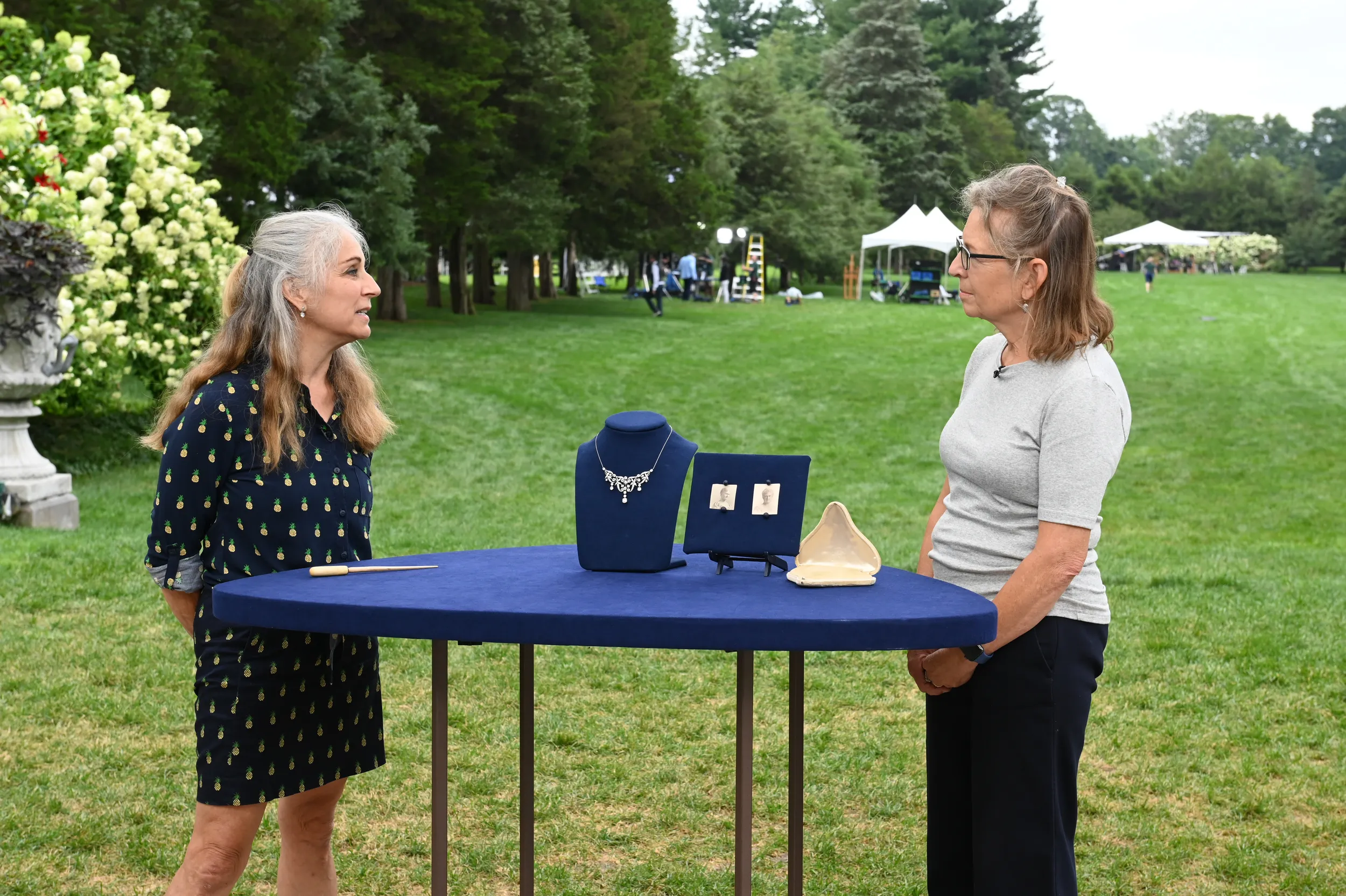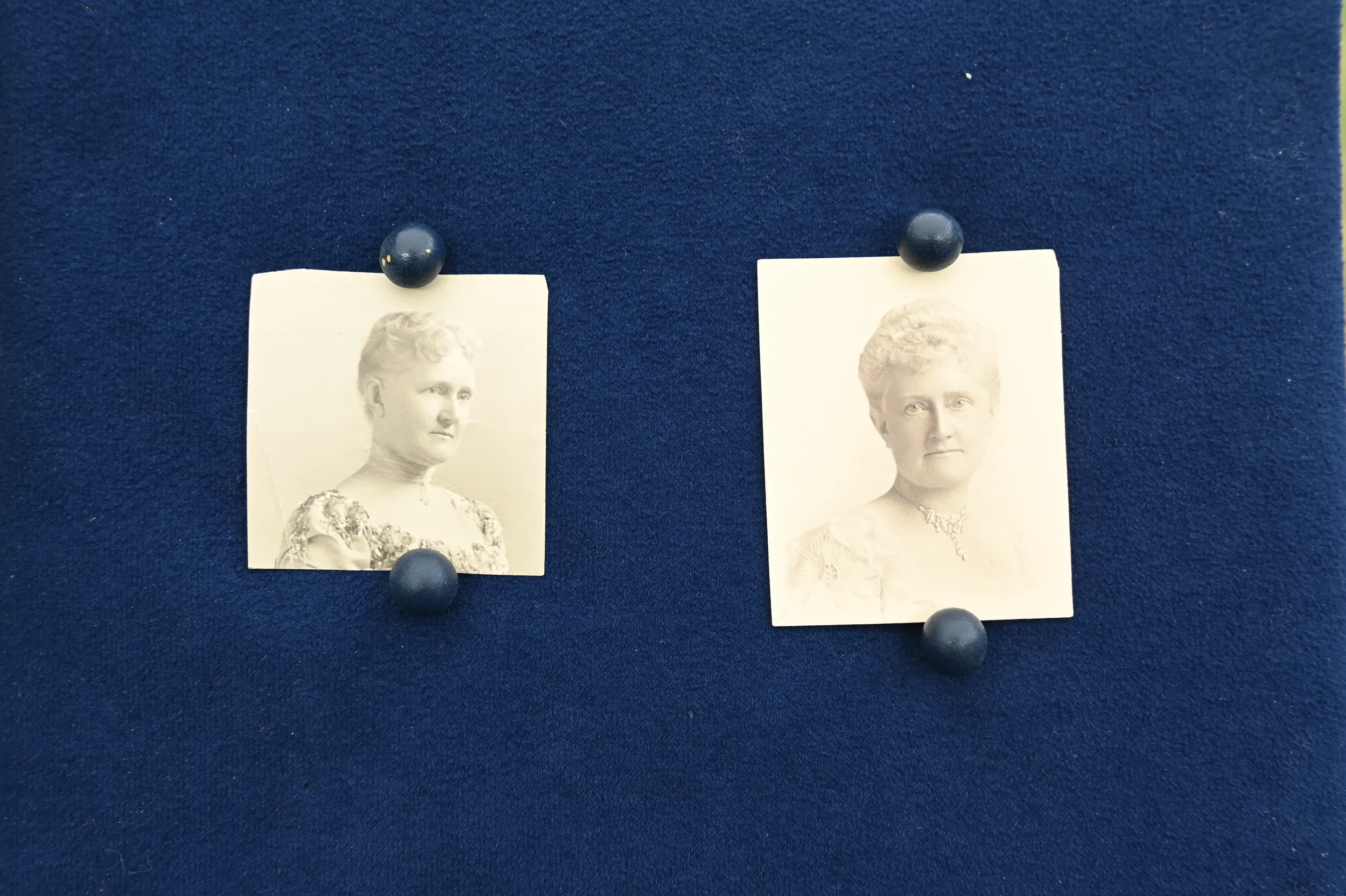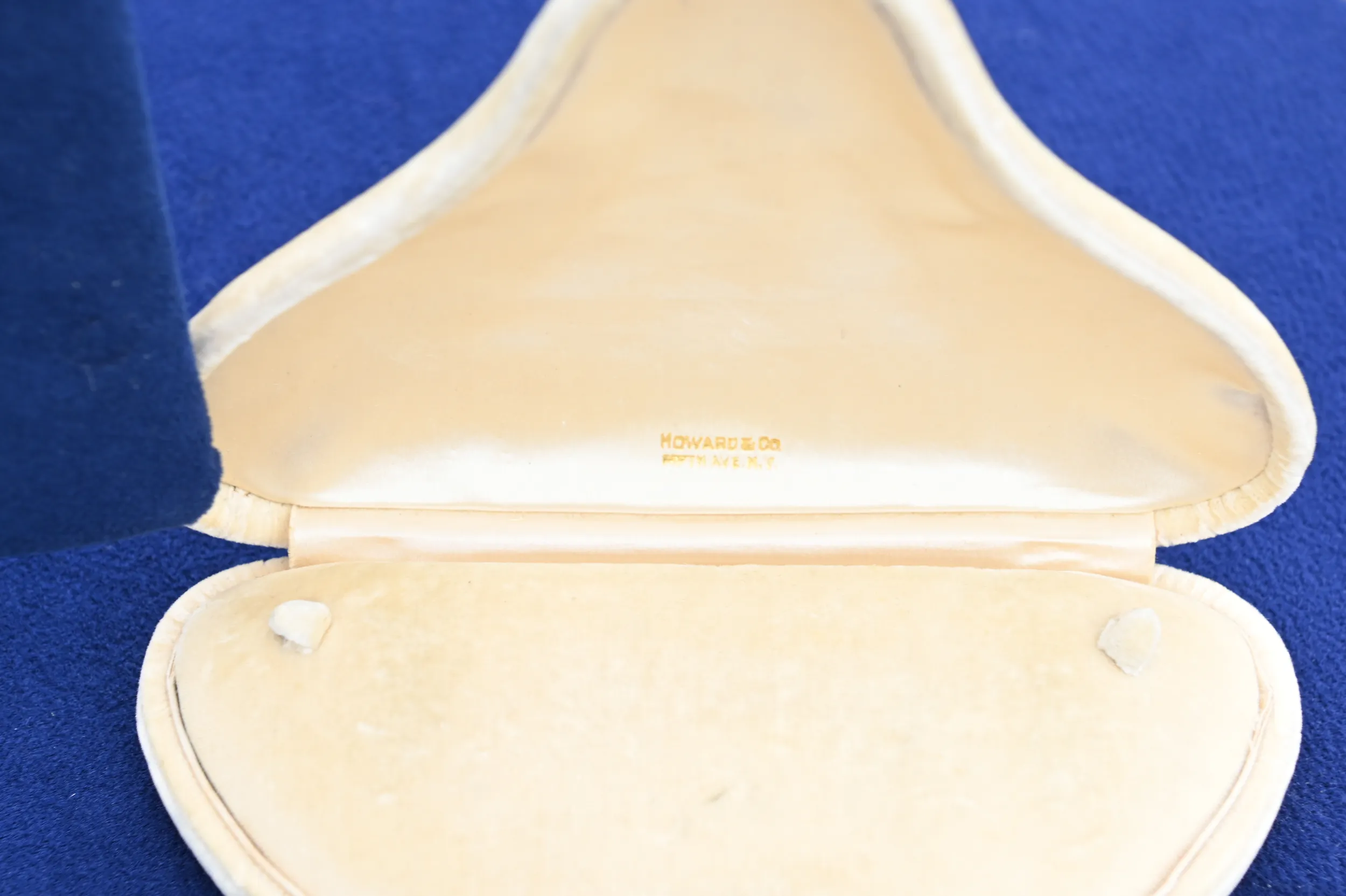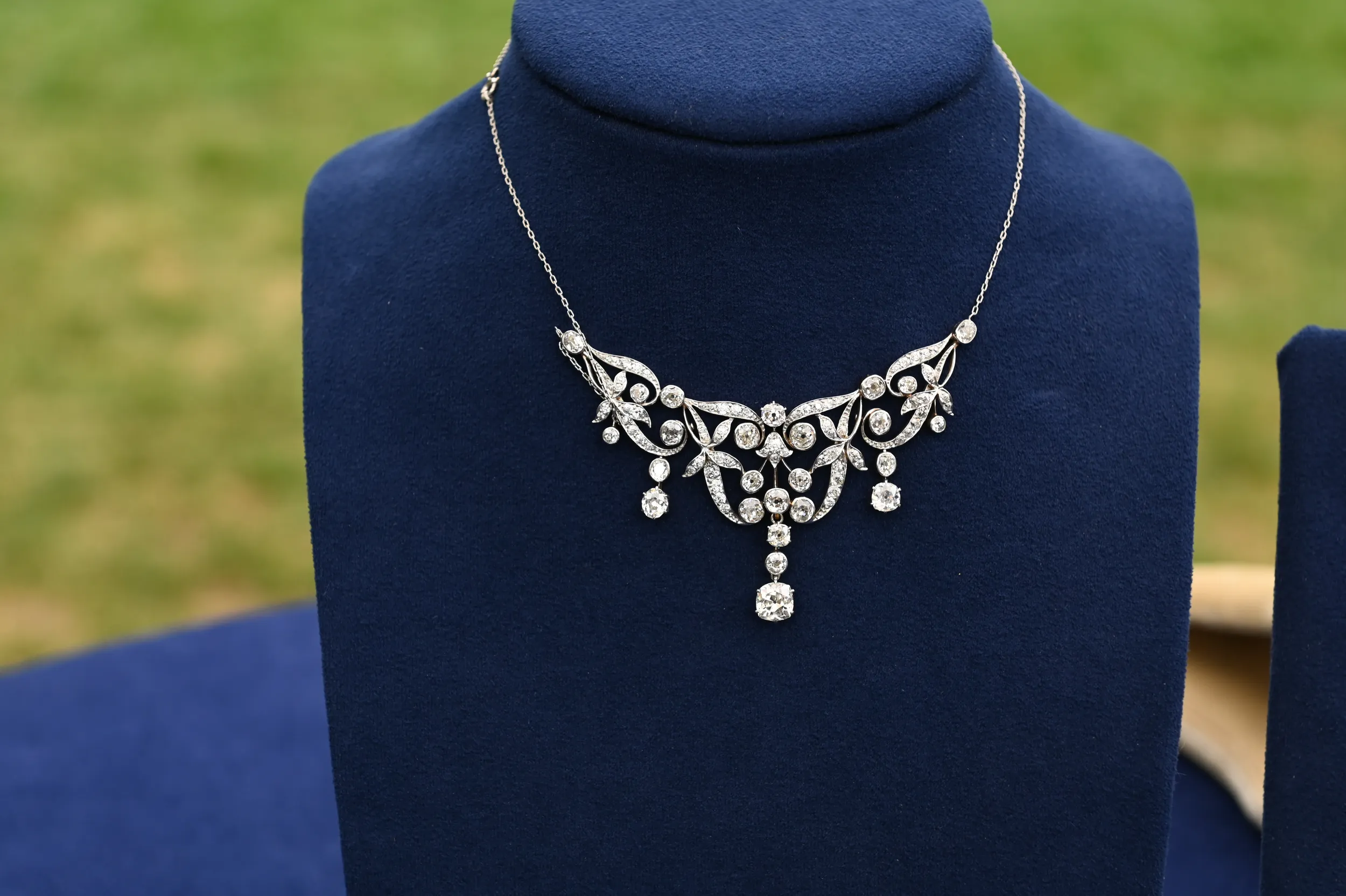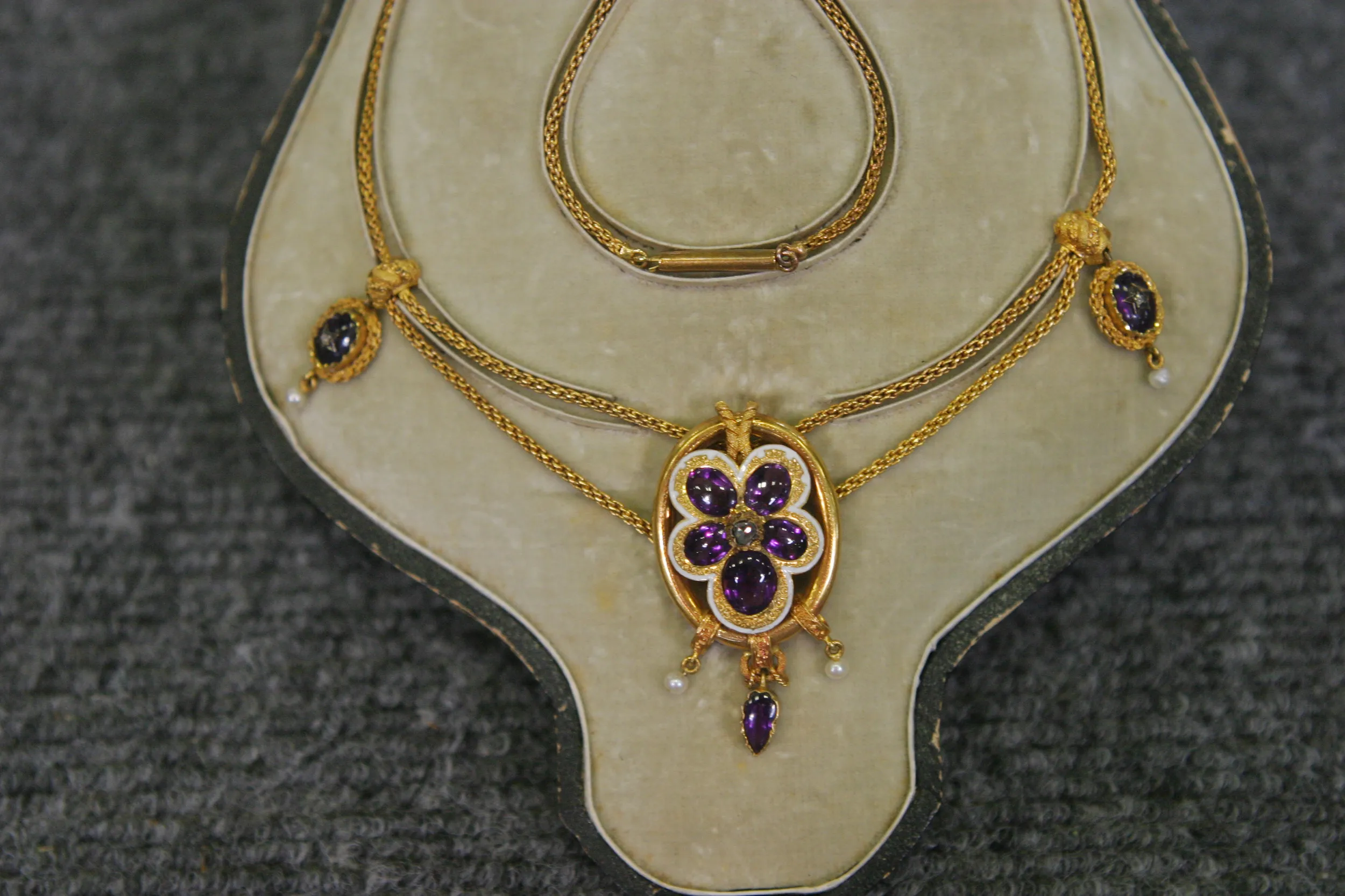GUEST: This belonged to my grandmother um. It was given to her husband by his mother um. It had been left in trust from Nellie Bonaparte, and now it belongs to my mother. I really don't know anything about it. I wasn't sure if it was the original box, honestly.
APPRAISER: Okay. I can tell you it's absolutely the original box. The geometry of the necklace matches the geometry of the box.
GUEST: It does, okay.
APPRAISER: Howard and Company is mostly known for silver. They're a New York firm that opened in 1866. Joseph Howard had started in the jewelry business at the age of 14.
GUEST: Huh.
APPRAISER: Joined Tiffany and Company in '53, and in 1866, decided to become his competitor. He was making enough money that, in 1874, he can open a shop in Newport, Rhode Island...
GUEST: Okay.
APPRAISER: ...and at some point, a shop in Paris.
GUEST: Wow.
APPRAISER: So, Nellie Bonaparte was among the wealthy. They were sort of mingling in the Gilded Age in New York, 1870 to 1909. You have two photographs here.
GUEST: Honestly, I'm not quite sure who they are of, but in one photograph, it looks to me like she is wearing this necklace, and in the second photograph, I think she's wearing pieces from the necklace separately, but I'm not sure.
APPRAISER: You feel that they're all part of the original configuration of this necklace?
GUEST: I do.
APPRAISER: Well, I'm here to say that they were not.
GUEST: (laughs): Okay.
APPRAISER: This necklace is not missing anything.
GUEST: Oh, that's great! It is...
APPRAISER: I think that's better.
GUEST: It is.
APPRAISER: It is transformable. If we turn this over, we're going to see the shepherd's hook on the reverse.
GUEST: I've never even heard of a shepherd's hook.
APPRAISER: Well, it's a jewelry attachment that comes up behind the jewel.
GUEST: Okay.
APPRAISER: And this piece, this element can slide up and off it.
GUEST: Oh, sure! (gasps): Oh, I'm glad we've never lost it.
APPRAISER: The piece is made out of platinum-topped gold. That gives me a little bit of an indication that it's slightly early Edwardian-style jewelry.
GUEST: Okay.
APPRAISER: The transition from platinum-topped gold to full-on platinum in this country generally occurs at around 1905. In France, it's a little bit earlier, but here it's around 1905. So this piece and the platinum- topped gold, I feel it dates around 1895. The diamonds are all European-cut diamonds. The central stone appears to weigh between two to two-and-a-half carats. It's a little bit hard to say. The old-cut stones are very meaty.
GUEST: Okay.
APPRAISER: They're very heavy, and they tend to weigh more than they appear to weigh. I believe there are about 20 carats total weight throughout the necklace. It's really sexy. It's possible that more than one might have been made, but not many.
GUEST: Okay. Is the piece marked by the jeweler?
APPRAISER: Not at all. A couple of pieces have come up to auction from this company, beyond the silver. And they do quite well.
GUEST: Does it change the value of it that it came through that family?
APPRAISER: I do not believe in this particular case that it does.
GUEST: Okay.
APPRAISER: With the information that you've provided.
GUEST: Okay.
APPRAISER: I think, in the box, a retail value for this necklace is certainly between $35,000 and $45,000.
GUEST: Oh, oh, okay. I had no idea! (laughs) Wow, um... Great, well, thank you, thank you so much. I had no idea.
APPRAISER: You're more than welcome.
